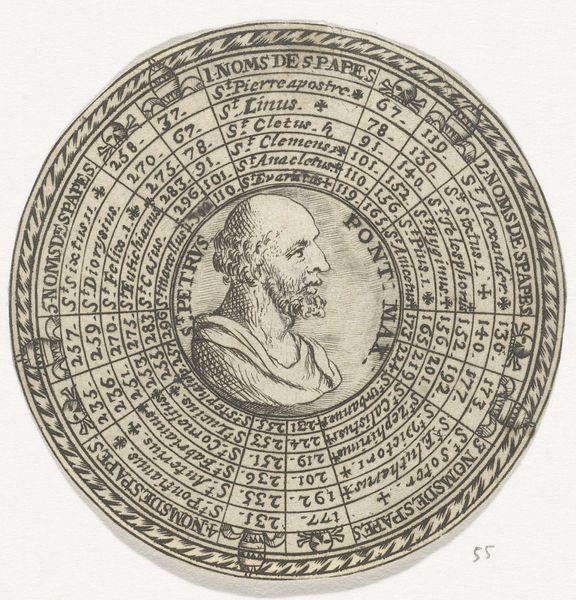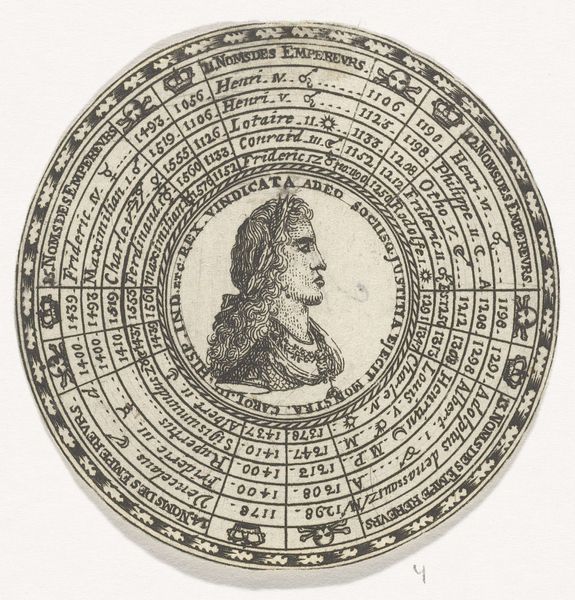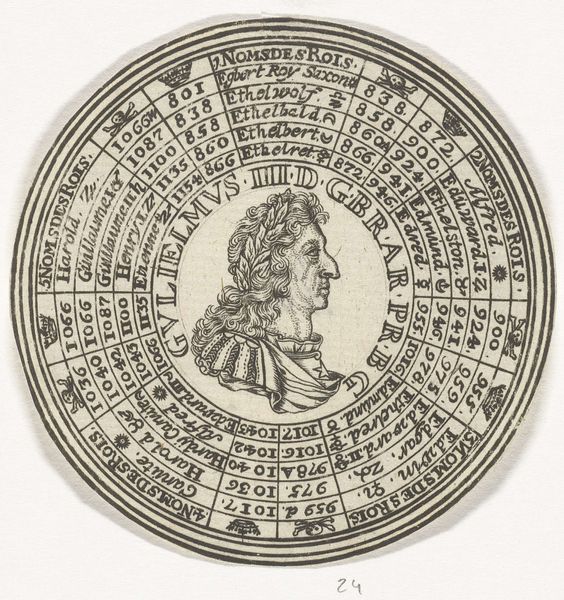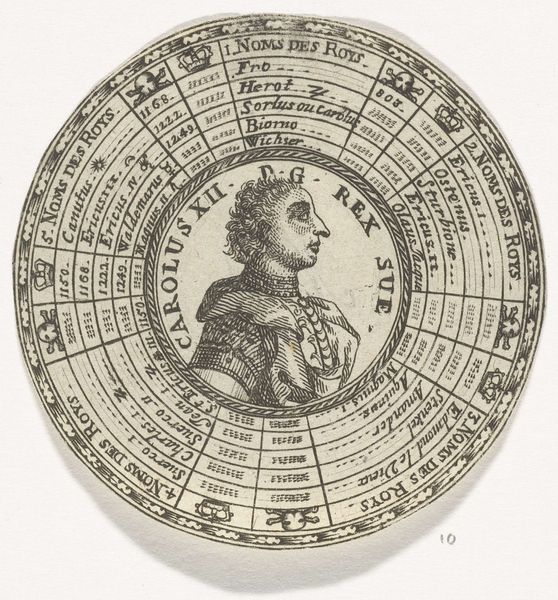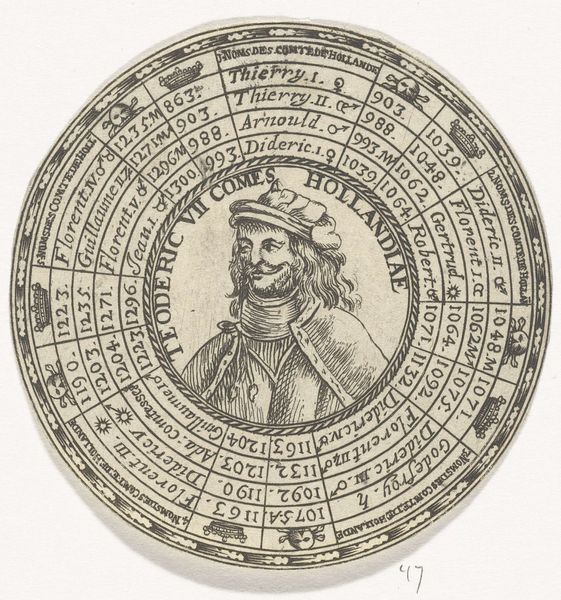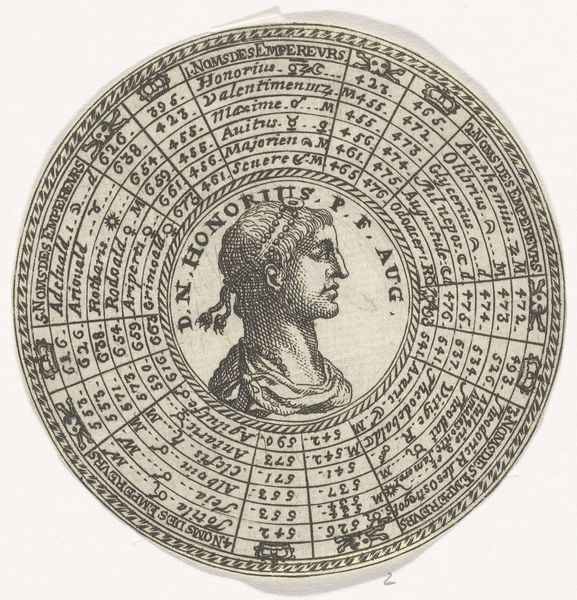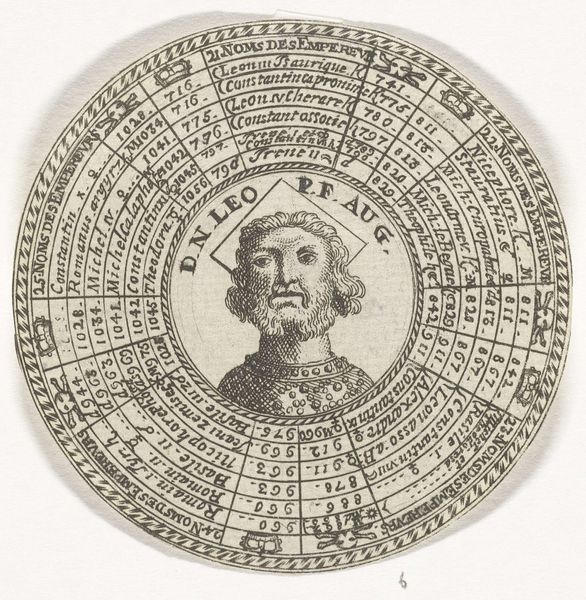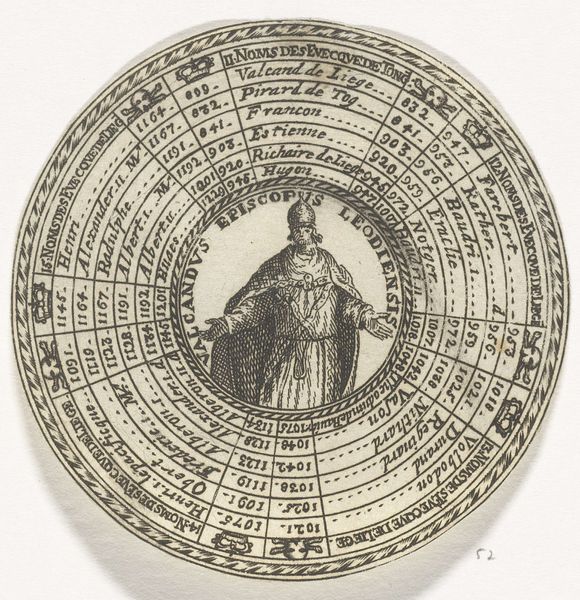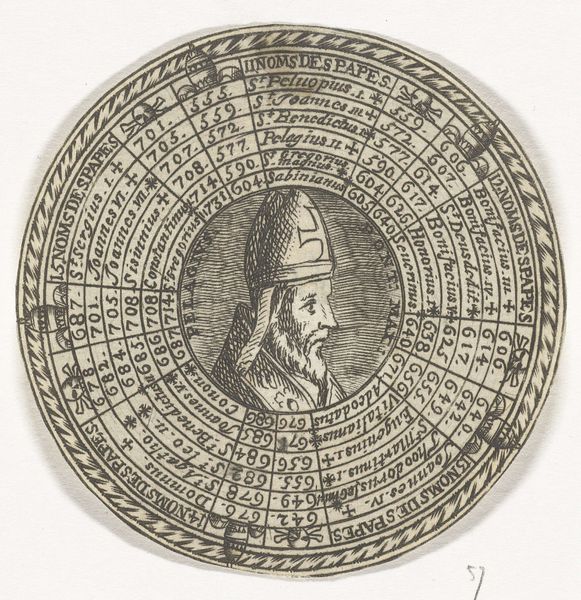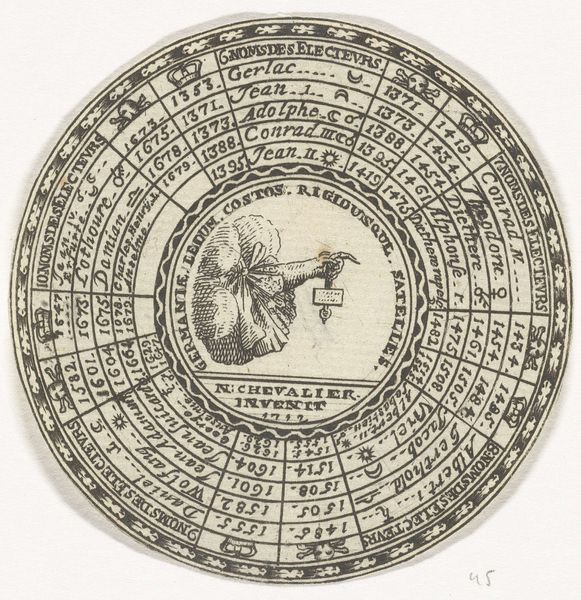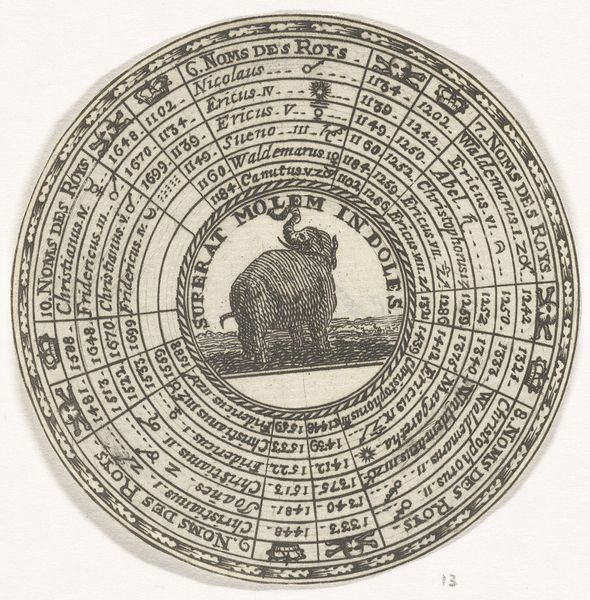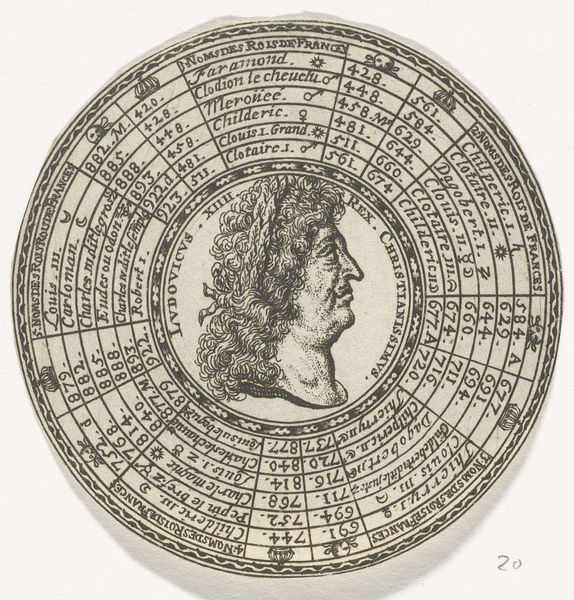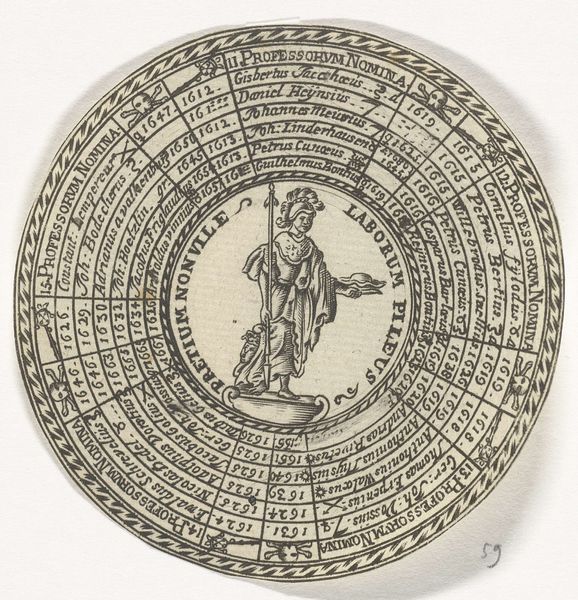
print, engraving
#
portrait
#
baroque
# print
#
old engraving style
#
pencil drawing
#
geometric
#
pen work
#
history-painting
#
engraving
Copyright: Rijks Museum: Open Domain
Curator: This is an engraving dating from 1685 to 1720, titled "Penning met het portret van paus Vigilius en de namen van de pausen"—which translates to “Medal with the portrait of Pope Vigilius and the names of the Popes.” It’s the work of an anonymous artist. Editor: My first thought is just how intricate it is. All those tiny details, the delicate lines of the engraving... It almost looks like an elaborate clock face or some kind of measuring device. Curator: The geometric composition certainly lends itself to that interpretation. It reflects the Baroque era's interest in complex designs and the use of symbolic imagery. You've got the portrait of Pope Vigilius at the center, surrounded by the names and corresponding numbers. It’s a historical record presented as a devotional object. Editor: Focusing on the process, you see the labor involved. Imagine the artisan meticulously etching each of those names, numbers, and the portrait itself, probably using a very fine tool. Also the material of the engraving itself is interesting, especially how it allowed for detailed work at a reasonable scale. How were these circulated and consumed, given the clear level of effort? Curator: Exactly! Prints like this were often used as a way to disseminate information and propaganda. This particular piece likely served to solidify the lineage and authority of the papacy. The Baroque era was a time of religious and political upheaval, so these sorts of visual statements were crucial. Editor: Thinking about its function—did the audience engage with these systematically, looking up particular dates or references, or were they displayed as symbolic totems of religious authority? This touches on the intersection of art, labor, and the socio-political machine. Curator: I think it probably functioned on multiple levels. The central image of the Pope serves as a clear figure of authority while the surrounding names and numbers create this impression of deep history and tradition. It served a purpose as a reminder of the power of the Church, especially during the Counter-Reformation. Editor: It prompts me to think about art's utility—the value that objects had as they circulated from the creator to the hands of various users, fulfilling their role in a specific time and social structure. Curator: Indeed. Analyzing this piece through a historical lens provides such rich insights. Editor: Yes, it definitely reveals a complex relationship between faith, artistry, and the production of meaning.
Comments
No comments
Be the first to comment and join the conversation on the ultimate creative platform.
